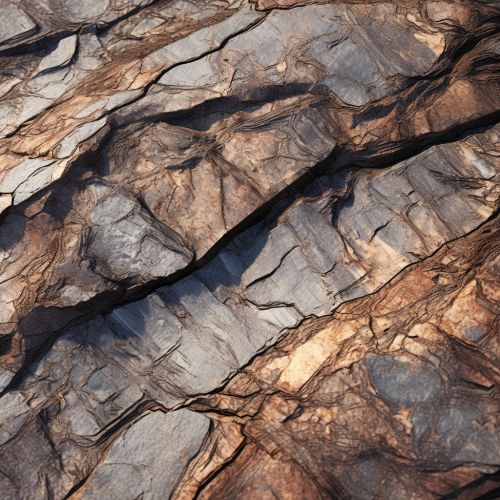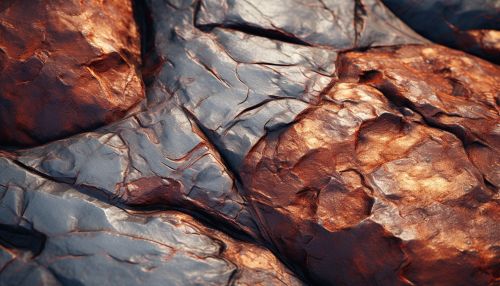Abrasion (geology)
Introduction
Abrasion in the context of geology refers to the mechanical scraping of a rock surface by friction between rocks and moving particles during their transport by wind, glacier, waves, gravity, running water or erosion. After friction, the moving particles dislodge loose and weak debris from the side of the rock. The intensity of abrasion depends on the hardness, concentration, velocity and mass of the moving particles.
Process of Abrasion
Abrasion occurs in a variety of geological settings including above and below the glacial ice, in rivers, on the sea floor, in deserts, and on shorelines. The process involves the wearing down or rubbing away of the surface layer of rock or other material by the mechanical action of other rock particles carried by water, wind, ice or other natural agents. This results in a smoother and more polished surface.


Factors Influencing Abrasion
Several factors influence the rate and intensity of abrasion, including the hardness and shape of the particles causing the abrasion, the velocity and direction of the wind or water carrying these particles, and the hardness and chemical composition of the surface being abraded.
Hardness and Shape of Particles
The hardness and shape of the particles causing the abrasion play a significant role in the process. Harder and sharper particles will cause more severe abrasion than softer or rounded particles. Similarly, particles with irregular shapes or sharp edges will cause more abrasion than those with smooth, rounded shapes.
Velocity and Direction of Wind or Water
The velocity and direction of the wind or water carrying the abrasive particles also significantly influence the rate and intensity of abrasion. Higher velocities result in more severe abrasion, as the particles have more kinetic energy and therefore can cause more damage to the surface. The direction of the wind or water can also influence the areas of the surface that are most heavily abraded.
Hardness and Chemical Composition of the Surface
The hardness and chemical composition of the surface being abraded also play a role in the process of abrasion. Harder surfaces are more resistant to abrasion, while softer surfaces are more easily abraded. The chemical composition of the surface can also influence its susceptibility to abrasion, as some minerals are more resistant to abrasion than others.
Effects of Abrasion
Abrasion can have several effects on the landscape, including the formation of ventifacts, smoothing and polishing of rock surfaces, and the creation of glacial striations.
Formation of Ventifacts
Ventifacts are rocks that have been shaped by the abrasive action of windblown sand. The wind causes the sand particles to impact the rock surface, gradually wearing it away and creating a smooth, polished surface. Ventifacts are often found in desert environments, where windblown sand is common.
Smoothing and Polishing of Rock Surfaces
Abrasion can also result in the smoothing and polishing of rock surfaces. This is particularly common in glacial environments, where the movement of the glacier over the rock surface can cause extensive abrasion. The result is a smooth, polished surface that often has striations or grooves caused by the movement of the glacier.
Creation of Glacial Striations
Glacial striations are grooves or scratches in the rock surface caused by the abrasive action of a glacier. These striations are often parallel, indicating the direction of the glacier's movement. They can provide valuable information about the history of the glacier, including its direction of movement and the rate at which it was moving.
